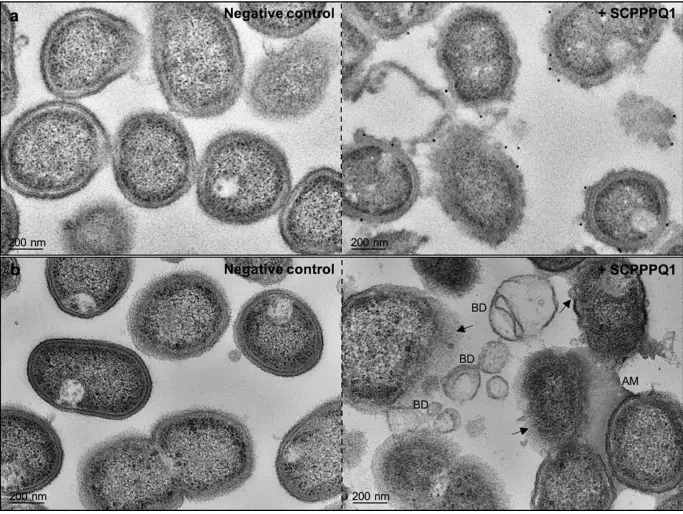
After the gut, the mouth is the most important microbiome in the human body, with the inhabitants ranging from bacteria and fungi to viruses and protozoa. If this careful balance of microorganisms is thrown off even by a little, certain pathogens could propagate and cause serious periodontal diseases. One such pathogen is Porphyromonas gingivalis (P. gingivalis), which degrades the specialized basal lamina components that protect supporting teeth tissues. However, one component of this specialized basal lamina, the Human SCPPPQ1 Protein, had shown to be not only resistant to P. gingivalis, but also to affect the cell membrane of P. gingivalis itself. A group of researchers then decided to explore the antimicrobial properties of the SCPPPQ1 protein and its peptide derivatives.
SCPPPQ1 protein and peptide derivatives as antibacterial agents
Using the SCPPPQ1 protein itself and derived peptides synthesized by LifeTein, the group sought to test how they fared against P. gingivalis in isolated conditions. After incubating the two together, results showed a rapid and significant decrease of P. gingivalis population. The means of which were narrowed down to aggregation of bacteria and membrane disruption.
The group went further and tested the antibacterial properties against other pathogens, and though there were results, none were as significant as those against P. gingivalis. The results point towards a more honed treatment against P. gingivalis using this knowledge of the SCPPPQ1 protein and its peptide derivatives. Since the protein itself is native to the human mouth, further application to treat periodontal pathogens with its antibacterial properties is not out of the question.
Mary, C., Fouillen, A., Moffatt, P. et al. Effect of human secretory calcium-binding phosphoprotein proline-glutamine rich 1 protein on Porphyromonas gingivalis and identification of its active portions. Sci Rep 11, 23724 (2021). https://doi.org/10.1038/s41598-021-02661-w
